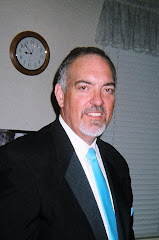Last week I wrote about sustainability from the perspective of organizational members and leadership. In response to my blog, a friend and former manager, Tom Floodeen, wrote, “Another aspect that needs to be considered is the stability of the processes the organization follows. If the processes are correct, stable and sustainable, the people can change but the end result stays the same. It also allows new people that join the organization and come up to speed faster, if the processes are well defined and documented. I agree you have to groom your replacement, but if your replacement changes everything, or if my success was solely based on my abilities, sustainability is at risk.”
This is a great point and a good lead into the topic I want to write about today: process and systems theory. I’ll actually approach them in reverse order.
Ludwig von Bertalanffy and others developed systems theory from the study of living organisms. Systems theory has not been applied to a wide range of topics, including organizational theory. This theory includes the idea that there were two kinds of systems, open and closed. An open system interacts with its environment, is affected by it, and also affects it. Closed systems exist with no external feedback loop. There are few if any completely closed systems; even systems typically given as examples of closed systems (a watch for example) require some external input to sustain them. I won’t discuss the concept here more fully.
I, and most systems thinkers, envision organizations as open systems. As such, they have the characteristics of an open system: 1) elements of the system interact with each other in such a way they can only be fully understood within the context of that interaction; 2) understanding the parts in isolation is not sufficient to understanding the whole; 3) parts of the system are more than a fraction of the overall system – they have an existence on their own; 4) to fully understand the system it has to be examined from an external or meta perspective; 5) it must change input resources into output products or services; and, it posses structure and processes.
My experience with and research about high performing organizations indicate a couple of characteristics apropos this discussion. First, high performing organizations have, as one of their primary foci, an emphasis on productivity. Concern and effort is shown to ensure that the organization operates effectively. As Tom implies in his comment, that includes a focus on processes to ensure they are “correct, stable, and sustainable.” I would modify Tom’s list to note that processes need to produce results that meet or exceed customer/client requirements. I believe Tom would include that in “correct”, but it is an important enough point that I wanted to highlight it.
Today, in order to ensure their processes meet the customers or end users needs, and they are stable and sustainable, many companies are implementing some form of process control. Six-sigma, lean manufacturing or production, TQM [total quality management], SPC [statistical process control] and Kaizen all have at their heart an effort to create and maintain processes that meet the criteria that Tom identified. These process control methods are all valuable because they help organizations systematically examine their processes and identify where there are opportunities for improving, quality, speed, or cost savings. I believe these process control activities can be effective, particularly in manufacturing settings. Their use can become more problematic in services based organizations but here too, if care is taken, I have seen successful application of principles of process control.
There is another characteristic of high performing teams that seems, at least on the surface, to be in conflict with the goal of creating of stable processes. My research shows that high performing organizations have an outstanding awareness of both external conditions and constituencies, and internal capabilities. To maintain that awareness, they continually scan the environment for threats and opportunities, and scan internally for strengths and weaknesses. Based on those scans, excellent organizations make changes, including changes to processes. Some managers believe that once best practices are determined and processes implemented they should not be changed. However, I believe that in excellent organizations processes are subject to continual change and improvement.
Earlier I mentioned Kaizen, which is a Japanese word applied to a method of process control and improvement. However, the word itself has a broader meaning, continuous improvement with the implication that the direction of improvement is towards perfection (See Kaizen: The Key to Japan's Competitive Success, by Masaaki Imai). Although, as applied in the workplace, it uses many of the typical tools of process control such as statistical analysis and the scientific method, its foundational meaning offers a broader meaning of striving for perfection in all aspects of life. I believe that Kaizen offers the opportunity to engage people in a more thoughtful, organic, and holistic manner. This characteristic makes Kaizen an appropriate approach for a broader range of organizational types, including human services, and for all levels of the organization.
Farewell to Twitter
1 year ago



